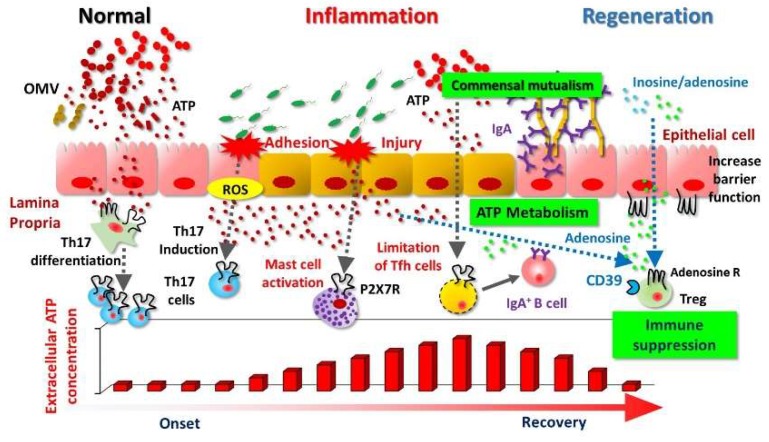Figure 1.
ATP as a pathophysiologic mediator for bacteria-host communication. The pathways through which extracellular ATP (eATP) mediates communication between bacteria and host immune cells in the intestinal compartment are shown. Bacteria (e.g., Escherichia coli) produce ATP in a growth-phase-dependent manner and secrete it in outer membrane vesicles (OMVs). ATP derived from commensal bacteria leads to the differentiation of intestinal T helper 17 (Th17) cells through the stimulation of antigen-presenting cells. The reactive oxygen species (ROS) produced by adhesion of bacteria to epithelial cells promotes differentiation of Th17 cells. ATP activates mast cells and enhances inflammatory responses via P2X7 (e.g., chemical mediator release and inflammatory cell infiltration). In the small intestine, eATP released by commensal bacteria indirectly limits immunoglobulin A (IgA) responses to various bacteria by interacting with P2X7 on follicular helper T cells (Tfh cells), thus decreasing Tfh cell numbers. Purine metabolites, adenosine or inosine, inhibit inflammatory responses through interaction with adenosine receptors (e.g., A2AR.). The dotted line arrow shows the eATP acts immune cells. The regular arrow shows induction of IgA producing B cells via cytokine production from Tfh cells.

